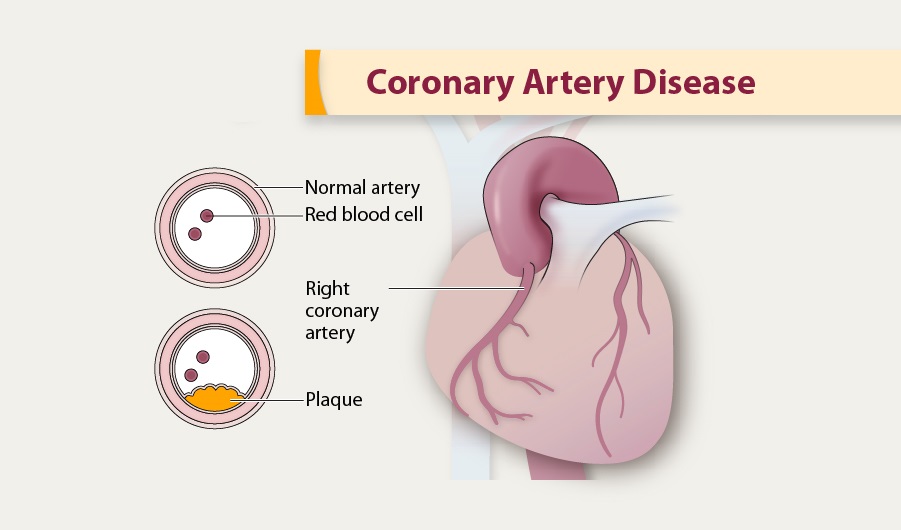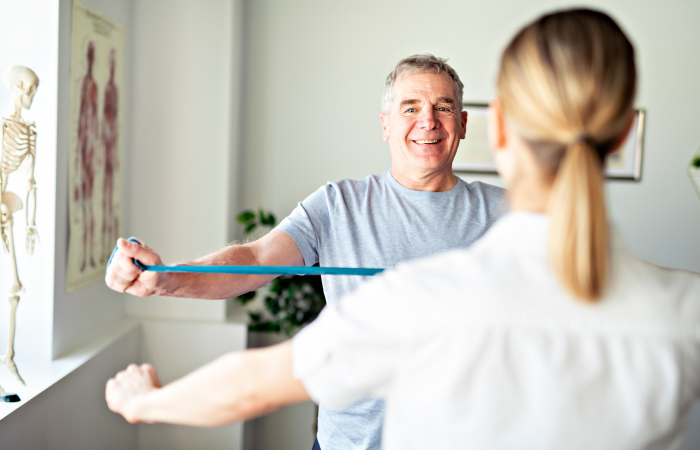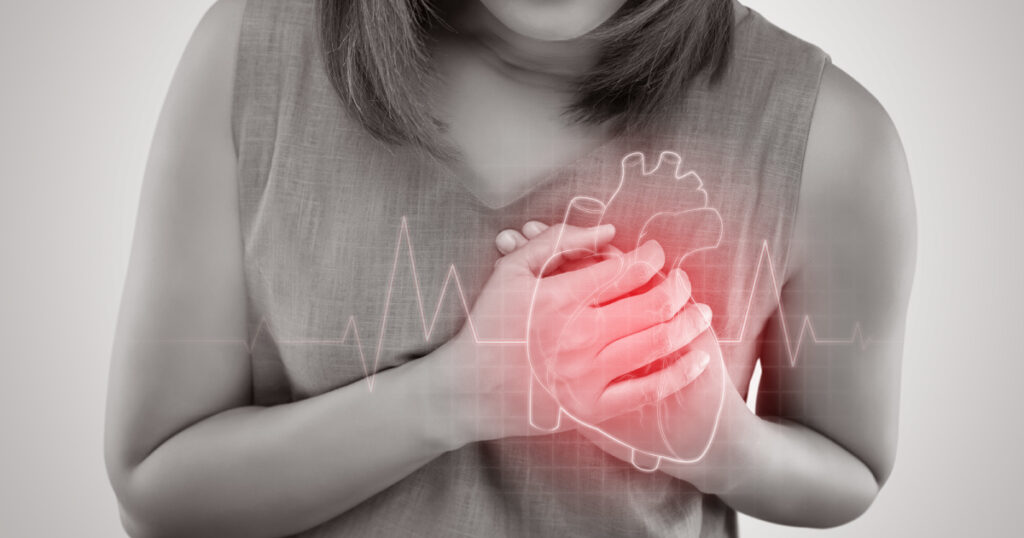Do you know Coronary artery disease is a leading cause of death worldwide? According to a report by World Health Organisation, CAD was responsible for approximately nine million deaths in 2016. Coronary artery disease or CAD stands for a cluster of heart disorders that can be diagnosed clinically and they are Aymptomatic Artherosclerosis, Stable Angina, Myocardial Infarction, and Acute Coronary Syndrome.
Pathogenesis of CAD
When a non-specific injury happens to the arterial wall, it increases the adhesion of molecules (lipids and platelets) in that area. More lipids attract more macrophages to the site and soon, the plaque begins to form. Aggregation of plaque helps in the formation of thrombus and this results in causing atherosclerosis.

Many risk factors can cause CAD. The non-modifiable risk factors are age, gender, and family history. On the other hand, modifiable factors such as smoking, sedentary lifestyle, stress, consumption of fatty foods, alcohol consumption, and diabetes mellitus can increase the risk of cardiac arrest. It is better to inculcate some good changes in your lifestyle.
Signs and Symptoms
A heart attack can cause any of these symptoms:
- Angina, chest tightness, pain or discomfort in breastbone radiating to shoulders, jaw, throat, or back
- Dizziness
- Cold sweats
- Nausea
- Shortness of breath, increasing with activity
If you experience any of these symptoms, consult your doctor right away.
Diagnosis and Treatment
Proper diagnosis can only be confirmed after the following tests:
- Blood Tests
- Electrocardiogram
- Chest X-Ray
- Computer Tomography
- Stress Testing
- Coronary Angiography
CABG and Cardiac Rehabilitation
CABG stands for Coronary artery bypass grafting and it is known to be the best treatment for CAD. In this type of surgery, a healthy artery is grafted to the blocked coronary artery to re-establish the blood flow to the heart. It is of three types: On-Pump Coronary Artery Bypass Grafting, Off-Pump Coronary Artery Bypass Grafting, and Minimally Invasive Direct Coronary Artery Bypass Grafting. The number of bypasses depends on how many arteries are blocked.
Cardiac Rehabilitation
According to WHO, Cardiac Rehabilitation is best defined as the sum of activity and interventions required to ensure the best possible physical, mental, and social conditions so that patients with chronic or post-acute cardiovascular disease may preserve or resume their proper place in society and lead an active life. A multidisciplinary team approach is required to achieve this goal.
Cardiac rehabilitation plays an important role in the pre-operative as well as post-operative phases. Each patient has its individual needs and the physiotherapist should plan the regime accordingly. A physiotherapist should keep contraindications and indications in mind and only then, he/she should set the goals.
Pre-operative Physiotherapy
Pre-operative physiotherapy helps in many ways and it prepares the patient for the surgery that he will be undergoing. The aims of pre-operative physiotherapy need to be clear and physiotherapists should teach effective exercises of coughing and huffing. The patient should know the correct technique for supporting the incision site. In the end, the physiotherapist should ensure a clear lung field and improve breathing efficiency.
- Ankle Toe Movements
- Breathing exercises
- Coughing and Huffing
- Shoulder Girdle Exercises
- Inspiratory Muscle Training to promote sputum evacuation
- Aerobic Training to improve physical fitness (after discussing it with a cardiologist)
Post-operative Physiotherapy

Post-operative physiotherapy is divided into 4 phases of rehabilitation. They are: In-Patient Phase, Immediate Post Discharge Phase, Intermediate Post Discharge Phase, and Maintenance Phase. Post-operative physiotherapy aims to maintain a clear airway, good posture, and mobility of the shoulder, and legs. It is also to prevent deep vein thrombosis and increase the patient exercise tolerance.
In In-patient Phase, gentle percussion and mild vibration are given to the patient along with spirometer and breathing exercises. Movement of limbs is also considered and you should ensure it.
In Phase 2, the functional goals are set and exercise training is done under supervision. It starts immediately after discharge. Mild stretching, aerobic exercises, and strength training exercise prescription are done and given to the patient respectively.
In 3rd Phase, the physical therapist should prescribe specific exercises to improve exercise tolerance and activity. For that, treadmill walking, upper and lower limb strengthening exercises, and flexibility exercises are considered.
In the 4th Phase, the patient needs to maintain the functional status of his/her body. Return to hobbies is considered and lifestyle modifications are done. With correct rehabilitation and a specific exercise regime, the patient can go back to his normal life.
It’s important to note that patients who were affected in Covid-19 wave 1, have lungs that are not opened up. To increase the vital capacity, appropriate breathing exercises are taught in order to have more stronger lungs.
About PHYWorld:
Phyworld is India’s Top Physiotherapy Clinic located in DLF Phase 1, Gurgaon, Punjabi Bagh, Delhi , and Defence Colony Delhi. Unanimously voted as among the top 10 Physiotherapy Centers of India at the INDIAN MEDICO PRIDE AWARDS.

